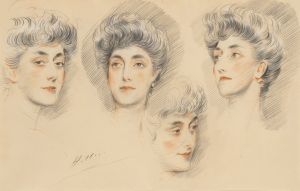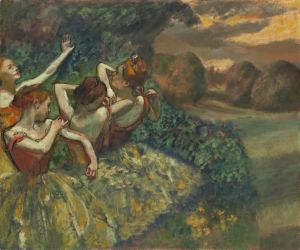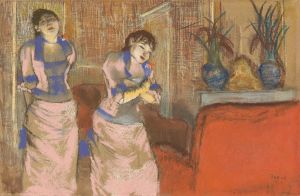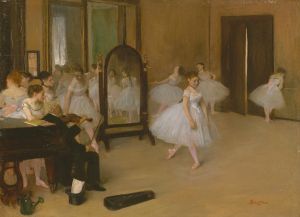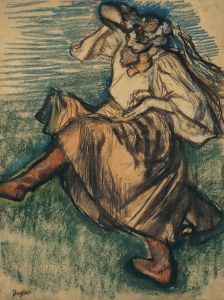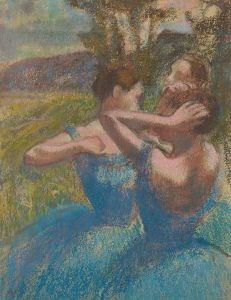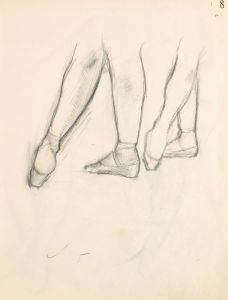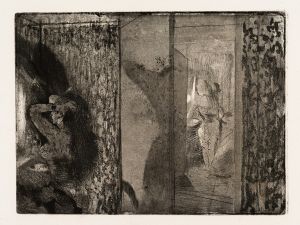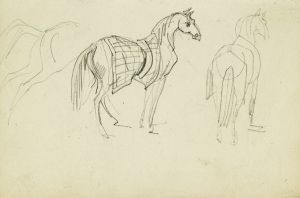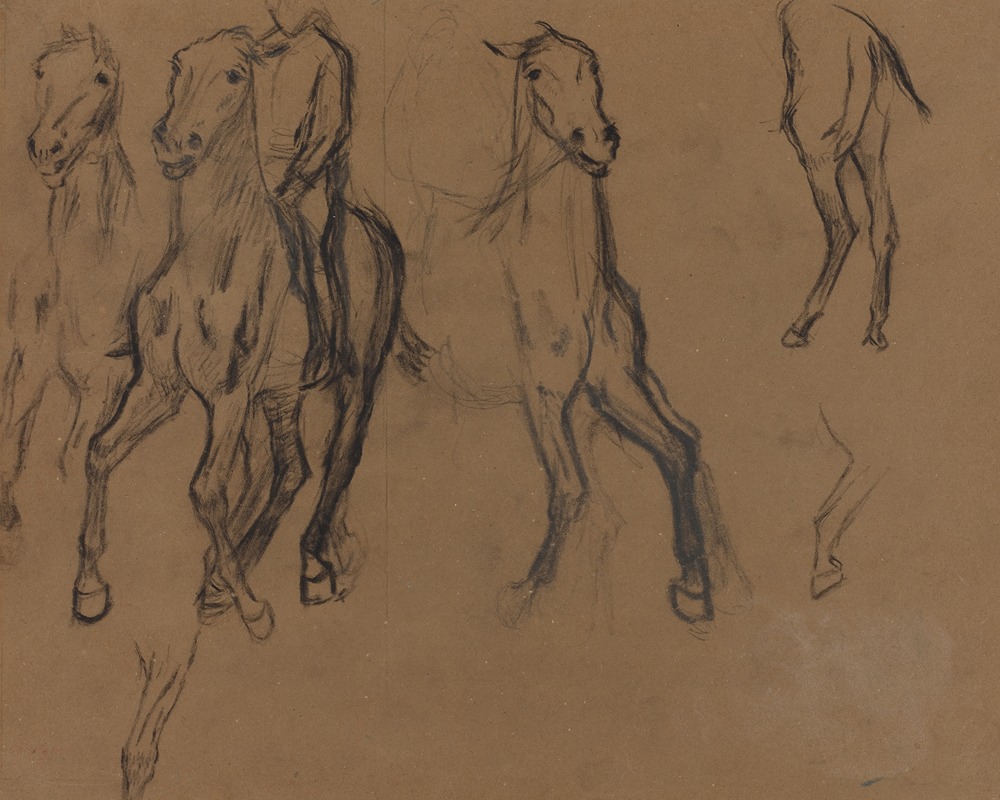
Study of Horses
A hand-painted replica of Edgar Degas’s masterpiece Study of Horses, meticulously crafted by professional artists to capture the true essence of the original. Each piece is created with museum-quality canvas and rare mineral pigments, carefully painted by experienced artists with delicate brushstrokes and rich, layered colors to perfectly recreate the texture of the original artwork. Unlike machine-printed reproductions, this hand-painted version brings the painting to life, infused with the artist’s emotions and skill in every stroke. Whether for personal collection or home decoration, it instantly elevates the artistic atmosphere of any space.
Edgar Degas, a prominent French artist known for his contributions to Impressionism, created a series of works focusing on horses, among which "Study of Horses" is a notable example. Degas, who lived from 1834 to 1917, was renowned for his ability to capture movement and his keen interest in the dynamics of modern life. While he is perhaps best known for his depictions of ballet dancers, his fascination with horses and horse racing is a significant aspect of his oeuvre.
"Study of Horses" reflects Degas's interest in equine subjects, which he explored through various media, including painting, drawing, and sculpture. His studies of horses often focused on the anatomy and movement of the animals, capturing them in various poses and activities. This particular study showcases Degas's skill in rendering the musculature and form of horses, emphasizing their grace and power.
Degas's interest in horses was partly influenced by the popularity of horse racing in 19th-century France. The sport was a fashionable pastime among the Parisian elite, and Degas frequently visited racetracks to observe and sketch the horses and jockeys. His works in this genre are characterized by a sense of immediacy and spontaneity, capturing the fleeting moments of action and the tension of the races.
In "Study of Horses," Degas employs a keen observational eye, focusing on the details of the horses' bodies and the nuances of their movement. His approach to depicting horses was methodical, often involving numerous sketches and studies before arriving at a final composition. This meticulous process allowed him to convey the dynamic energy of the animals, a hallmark of his work.
Degas's technique in these studies often involved a combination of media, including pencil, charcoal, and pastel. His use of line and shading was instrumental in conveying the texture and volume of the horses, while his attention to light and shadow added depth and realism to the figures. The result is a vivid portrayal that captures both the physicality and the elegance of the horses.
The study of horses also reflects Degas's broader artistic concerns, such as his interest in movement and his exploration of unconventional compositions. His works often feature unusual angles and perspectives, challenging traditional representations and inviting viewers to engage with the subject matter in new ways.
While "Study of Horses" is a testament to Degas's technical skill and artistic vision, it also highlights his ability to find beauty and interest in everyday subjects. His equine studies are not merely depictions of animals but are explorations of form, movement, and the interplay of light and shadow.
Degas's contributions to the depiction of horses in art have been influential, inspiring subsequent generations of artists to explore similar themes. His work remains a significant part of the canon of Impressionist art, celebrated for its innovation and its ability to capture the essence of modern life.
In summary, "Study of Horses" by Edgar Degas exemplifies the artist's fascination with movement and his skill in capturing the vitality of his subjects. Through his meticulous studies and innovative techniques, Degas created works that continue to resonate with audiences, offering a glimpse into the dynamic world of 19th-century France.






